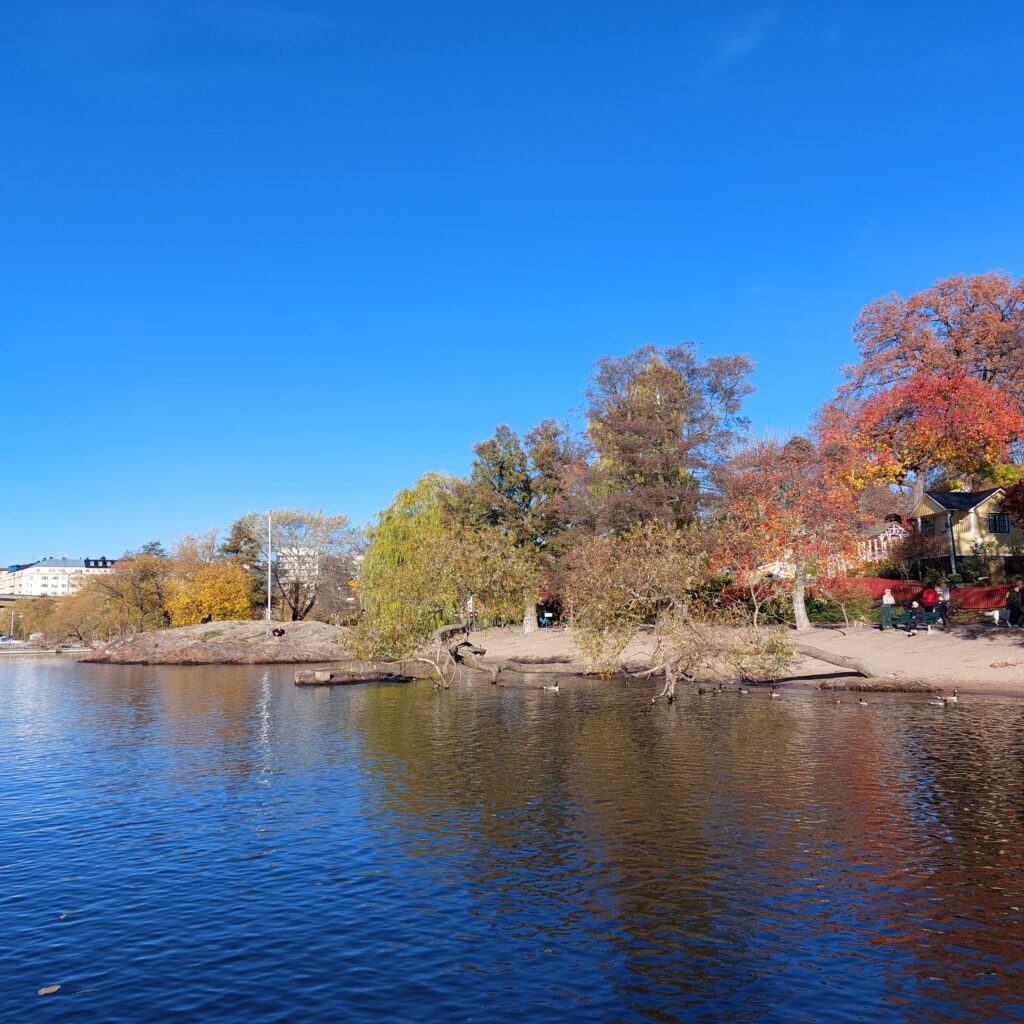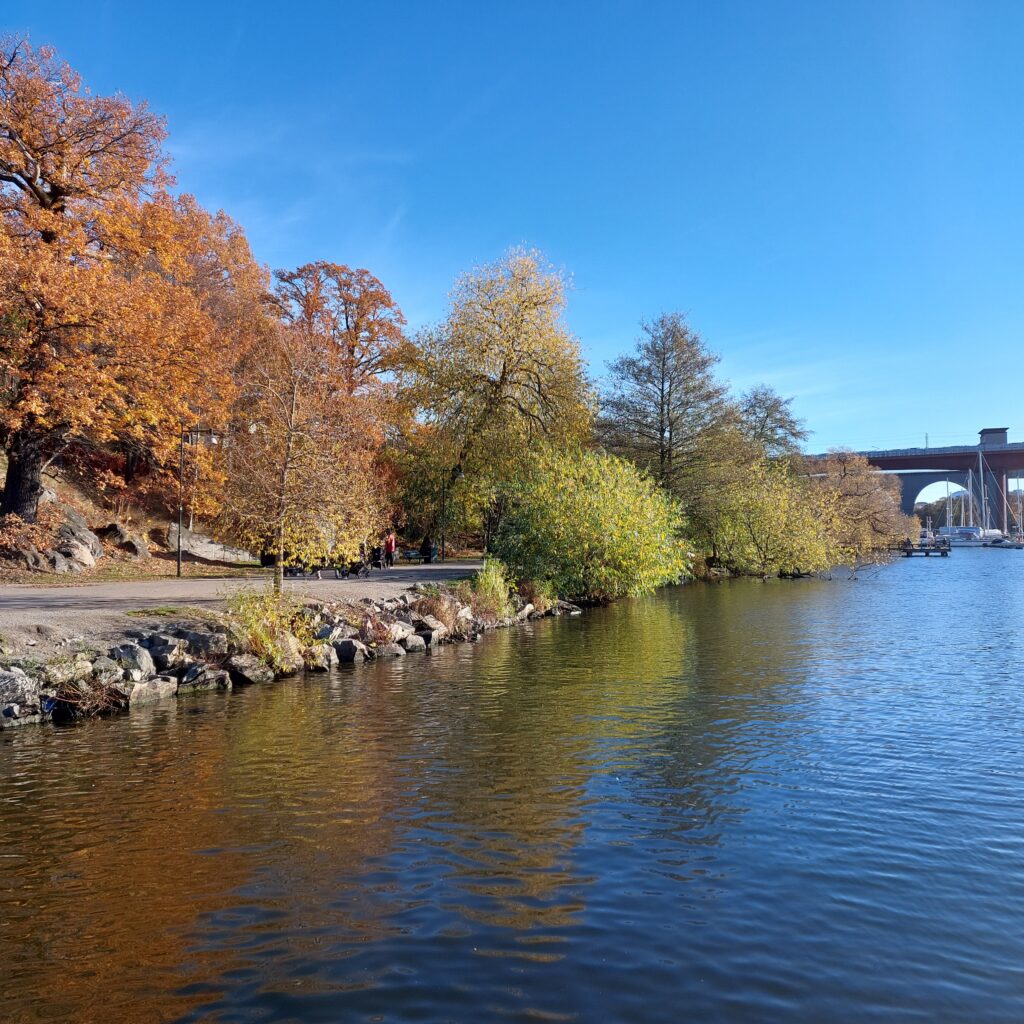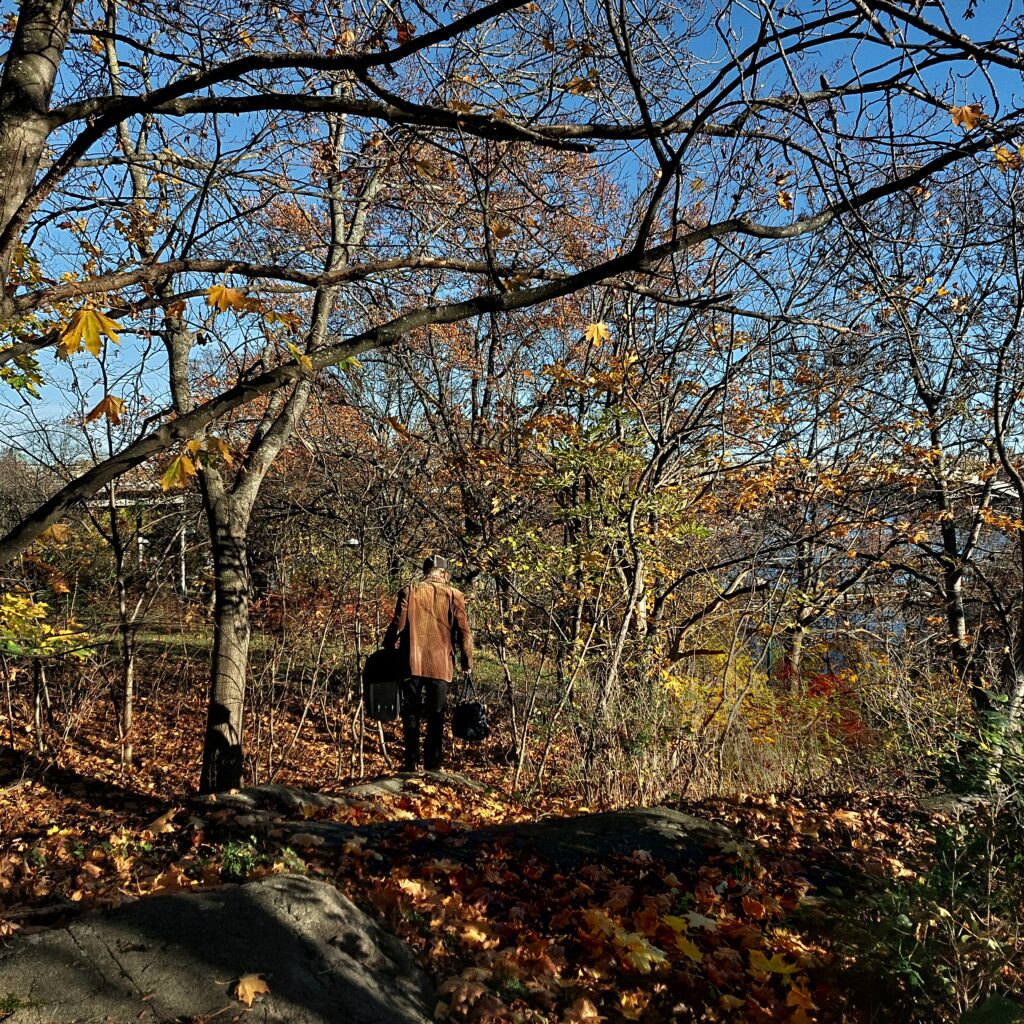Stockholm lies on both sides of the outlet of Lake Mälaren, as well as 19 islands. Due to its proximity to water and all the bridges, the city is often called the ‘Venice of the North’. The origin of the name Stockholm (Timber Islet) has not been fully agreed upon. It comes either from the collection of timber by the islets between lake Mälaren and the Salt Lake (Baltic Sea), or because the oldest settlement was secured with timber palisades.

The old town in Stockholm is called Gamla Stan and is located on Stadsholmen (the City Islet). The streets from the Middle Ages are beautifully curved in the terrain, with narrow alleys down towards the sea. It’s beautiful here!

After visiting the many small shops in Gamla Stan, it is a good idea to ‘fika’. The word originated as a backslang of the word ‘kaffi’, i.e. the letters were interchanged. A fika is a pause in work that typically consists of coffee, coffee bread and a relaxing conversation. These breaks are part of the paid working time and were mandatory for factory workers in the old days. The idea was that a break would give the laborers new energy in their work, and that the coffee conversation would ‘force them’ to get to know each other. Surely a very good thought!

After a fika, a bath is just right. We went northwards from Stadsholmen across Helgeandsholmen (island of the Holy Spirit). The name comes from the Helgeanshuset (the Holy Spirit Hospital) that was located there in the Middle Ages. Helgeandsholmen is 3 hectares in size, of which the Riksdagshuset (the Parliament) covers one hectare.

There is quite a lot of current by the Riksdag. This was too risky for us, so we didn’t swim there.

But at Vasabron we found a backwater with no current, perfect for a bath. The water in the canal was not disgusting at all – considering Stockholm’s 1.5 million inhabitants. It was quite shallow and an easy access at our bathing place, and a lot of sea grass. This autumn, Knut has had back problems and basically was happy to avoid extra challenges with climbing out of the water.

And we were not alone! A swan mother came swimming to us just after the bath. Angry or hungry? It is hard to say. Luckily we didn’t have to fight her in the water.

To round this off, we even could check out a little culture in form of a sculpture.

It was a fantastic bath at sunset. As usual, we were very worried about being rescued. But there were no problems. The Stockholmer’s took our bath with stoic calm, and only wondered a little about the temperature. And after the bath – the hotel’s sauna was just perfect.










